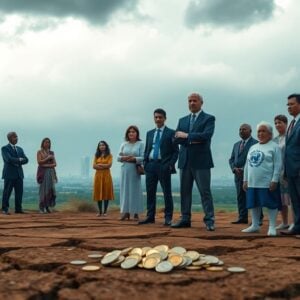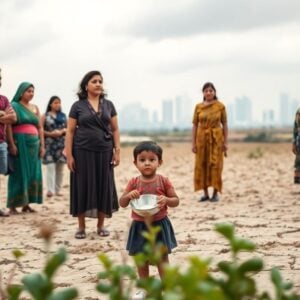The question of whether it is possible to end poverty has long inspired debate and action worldwide. Global leaders and organizations like the United Nations assert that poverty can indeed be eradicated through deliberate human effort and collective will. Nelson Mandela famously stated that poverty, much like slavery and apartheid, is man-made and can be overcome through human action. The UN’s first Sustainable Development Goal also reinforces this ambition — to “end poverty in all its forms everywhere.”
Zero poverty would mean breaking the cycle of deprivation in all its contexts — from families that occasionally fall below the poverty line due to crises, to those living on less than $3 a day. The goal is to build assets, resilience, and opportunities so that people can manage risks and sustain livelihoods. Whether it’s communities in Bangladesh facing floods, farmers in the Horn of Africa enduring droughts, or families in conflict zones, the shared objective is to equip them with the means to thrive despite their circumstances.
Experts like Dr. Victoria Kwakwa of the World Bank argue that while ending extreme poverty is possible, economic growth alone is not sufficient. Sustainable progress requires three pillars: promoting inclusive growth, investing in human capital, and strengthening resilience to shocks. Inclusive economic growth empowers people with dignified work and opportunities, as highlighted by advocates like U2’s Bono, who views commerce and job creation as engines for lifting people out of poverty. Programs such as the Graduation model have proven successful in helping individuals start businesses and achieve financial independence, as seen in Rwanda, where participants have transformed their lives through entrepreneurship.
Investing in human capital — through education, health, and skills development — is equally vital. Studies show that nutrition in early childhood, quality education, and lifelong learning contribute significantly to escaping poverty. UNESCO estimates that basic literacy alone could lift 171 million people out of extreme poverty, while universal secondary education could cut global poverty by more than half.
Resilience is the third key component. Poverty is often worsened by natural disasters, conflict, or economic crises that push vulnerable families further below the poverty line. Quick humanitarian responses like cash transfers help address immediate needs, but long-term strategies such as Disaster Risk Reduction and community savings groups build the foundation for recovery and self-reliance. Initiatives like the RESPECCT program in Chad illustrate how integrated livelihood support can improve economic security and stability for displaced and vulnerable populations.
However, achieving a world without poverty also requires strong political will and systemic change. As Concern’s Humanitarian Ambassador Dominic MacSorley notes, true progress demands difficult policy decisions and global cooperation. Wealthier nations also stand to benefit, as economically stable countries become valuable trade partners and reduce dependence on foreign aid.
While poverty may not be eradicated by 2030, global progress has been remarkable. Two centuries ago, over 90% of people lived in extreme poverty; today, that figure is below 10%. Although challenges remain in regions like Congo, Haiti, and Sudan, millions continue to escape poverty every year.
Organizations like Concern Worldwide continue to drive this mission by addressing poverty’s root causes — from inequality and climate vulnerability to lack of education and healthcare. Through integrated programs in livelihoods, nutrition, gender equality, and climate adaptation, Concern reached over 27 million people across 27 countries last year. Each step forward demonstrates that ending poverty is not only possible but already happening — one community at a time.







